There is nothing better than one of your favorite artists exceeding your expectations. This is what Seventeen’s latest comeback has done. “Home;run” is very Seventeen, both as a song but especially as a MV where the youthfulness of the group is prevalent. Combined with the MV’s distinct narrative, choice of imagery, and 1920s aesthetics, the final product exudes sophistication.
The song, too, catches the ear just as the MV draws the eye. Featuring a jazzy hook, “Home;run” is also influenced by the music of the era that the MV borrows its aesthetics from. The track is fun to listen to on its own, but the MV infuses a different visual experience that appeals to the storytelling nature of humans and their appreciation of aesthetics.
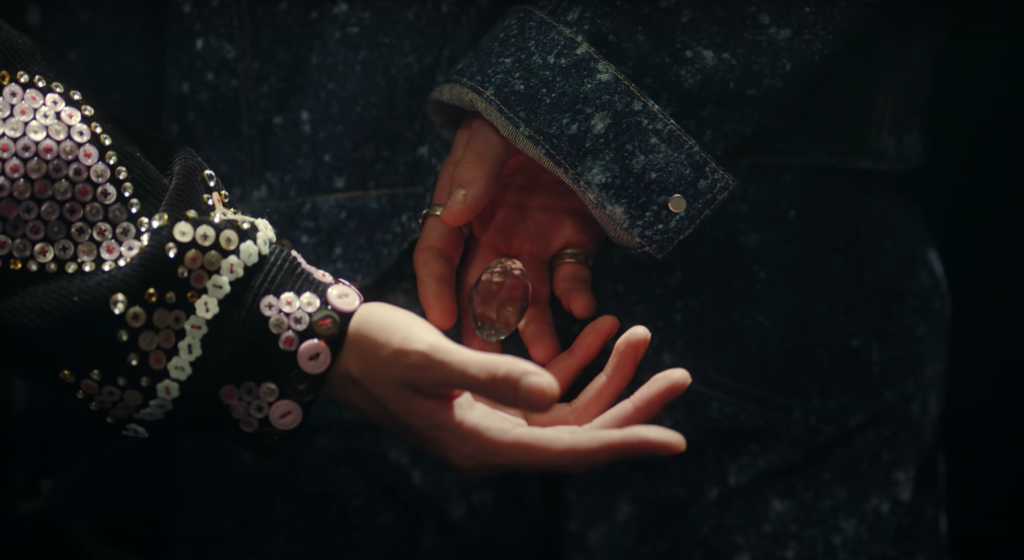
One of the earlier scenes shows Seventeen in a gambling den among chaos of cards and flying food, while Vernon stealthy passes the diamond — symbolic of Carats — to The8.
The quick sequence of a close-up shot of Vernon’s eyes darting to the right and then a cut to a similar shot of The8 looking left, thus matching the rapper’s eye-line. All of this happens in a rapid succession matching the pounding drum beats building to the chorus. All of this tension culminates in the crash and a close-up shot focusing only on Vernon dropping the diamond behind his back into The8’s waiting hands.
When you think about all of the ideas spinning around in the “Home;run” MV, it gets almost dizzying. The song, naturally, centers around the metaphor of a “homerun” with references to baseball in its lyrics and in the MV. The storyline of the MV, however, focuses on the members chasing down the loose diamond — first found by S.Coups — with an emphasis on a 1920s city aesthetic to give the narrative a retro cinematic flair.
The story follows a similar theme that Seventeen has worked with in the past, that of Seventeen’s and Carats’ journey together. On the front of the cinema in the MV, “Since May 26, 2015: Now Playing” shows the prominence of Seventeen as a group. They slip in another direct reference to Carats, besides the diamond, through the license plate of the green car, CR0214, Carat’s birthday.
Linked to the lyrics of “Home;run” and the MV’s narrative is Seventeen’s encouraging message when it feels like you are being chased by life. The pre-chorus goes:
Just be yourself
What are you so worried about
Hit further further further away
Up into the sky
In line with that, the “Home;run” MV combines a chaotic (then again, when is anything Seventeen not?) mix of elements, but they work so well together.
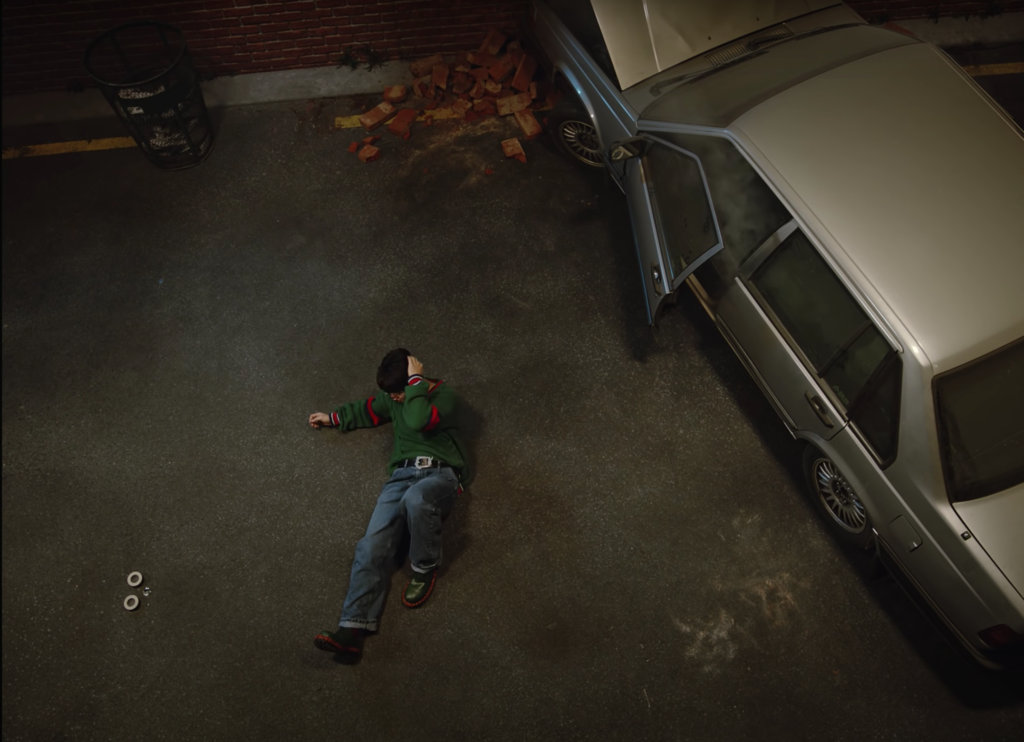
This cohesion, regardless of the amalgamation, is evident in the aesthetics of “Home;run,” from the three-piece suits Seventeen wears and the 1920s vibes of the darkly lit bar, the cinema set where the group launches into their high-energy choreography, the focus on newspapers to reveal significant plot points, as well as the set of the old luxury train. The roaring ‘20s then jumps to the brighter aesthetics of the bowling alley set and fashion that may have been inspired by the 1960s.
The opening set situates viewers in something familiar before launching into a time-jumping chase narrative. We first see S.Coups getting out of the car from “Left & Right” after crashing into the brick wall, which is also a familiar sight. In this way, “Home;run” continues a story that “Left & Right” began, at least location-wise. After Seventeen’s leader gets hit by the baseball that splits to reveal the diamond, the chase is officially on. S.Coups has the diamond, and the other members want it.
The fight for the diamond flips back to the past once The8 gets the diamond from Vernon, and the dancer curiously examines the jewel. The scene is now filtered in black-and-white, reflecting an old film aesthetic as The8 and Joshua casually drive down a quiet city street, the six songs of ; [Semicolon] illuminated in Broadway-like lights. The instrumentals lean into this shift in era with a heavier emphasis on a jazz piano and a light beat sometimes found in jazz music.
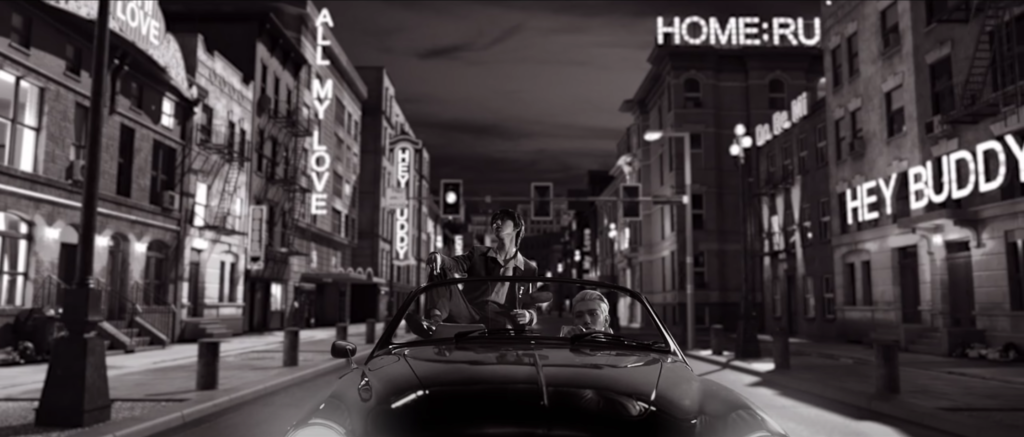
The scenes on the train adds to the smooth sophistication of “Home;run.” At this point in the story, Wonwoo and Dino search for the culprits possessing the diamond on a retro luxury train with dark wood paneling, peeking into each compartment as the train whips through the landscape.
Jeonghan and Mingyu slip from the other two members’ scanning eyes by hiding in plain sight in one of the compartments, pretending to read their newspapers. They are ironically surrounded by posters that question, “Who has the diamond now?” The two jump off of the train after seeing that they are being chased, following through with a classic escape sequence.
The elements of the MV and Seventeen’s ; [Semicolon] era intersect by the end of “Home;run.” Seungkwan throws the diamond directly at the camera, and the viewer, possibly sick of the members fighting over who should take the it. Yet, the story is not over, even as the diamond does not seem to be in the picture anymore. The MV underscores the semicolon theme and the idea of continuation when Jun rediscovers the diamond in the side of a building right in front of the brick wall from the opening, which now has a hole in it.
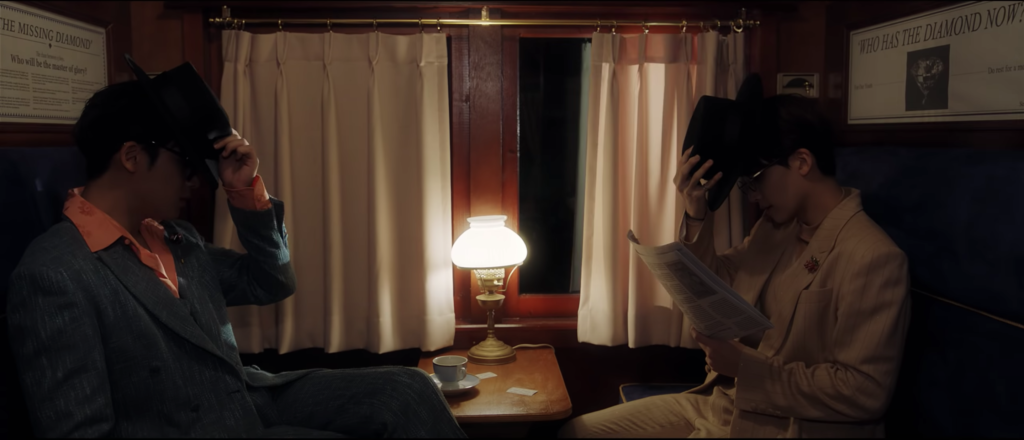
Since the 1920s aesthetic seen earlier is gone, this indicates that there may have been a time jump. Perhaps Seventeen has found the diamond years later. During the 1920s narrative, the members of Seventeen were often in groups of two, maybe three, hunting down the diamond until the last sequence where they all fight over it on the pool table. They were not working together as 13. This time, however, the diamond is defined by the group rather than the individual.
When Seventeen finds the diamond again a few decades down the line, the jewel rests on a platform with “17” engraved on it and “Semicolon ;” etched on the glass. The diamond looks like a lightbulb, as a strong glow radiates from it.
Woozi breaks the divide between the jewel (Carats) and Seventeen by taking a swing at the glass container with his baseball bat, bringing another direct image, the first one being baseball in the beginning, to connect to the concept of “homerun.” Through this action, it is as if Seventeen is releasing the new era of ; [Semicolon]—it is now time to carry on the story.
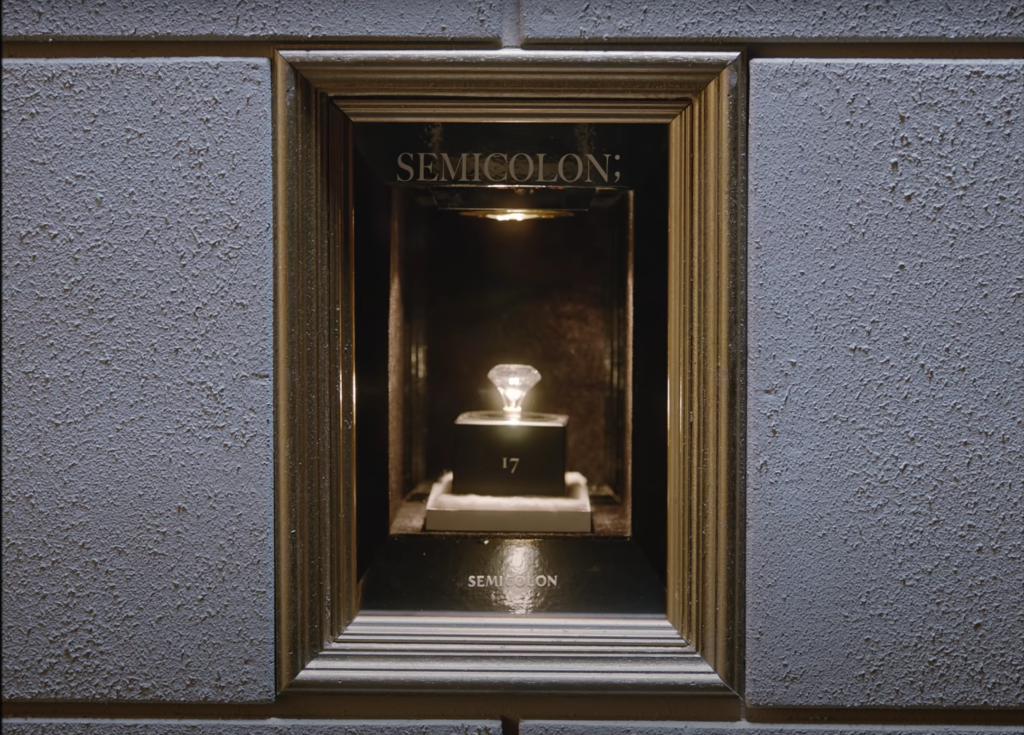
The unexpected shift in the narrative, from a chase to a liberation, mirrors the formatting choice of “Home;run.” Seventeen breaks the word up, speaking to the purpose of a semicolon, which is to give pause but to inevitably continue.
By centering the MV story around Carats (the diamond), it is like the group is “running home” to their fans who always support them and that the 13 members scored a “homerun” to have Carats. Seventeen connects the two ideas together with the “Home;run” MV, as they can continue their story as artists with their fans, regardless if they ever need to pause.
(YouTube. Images via Pledis Entertainment.)


